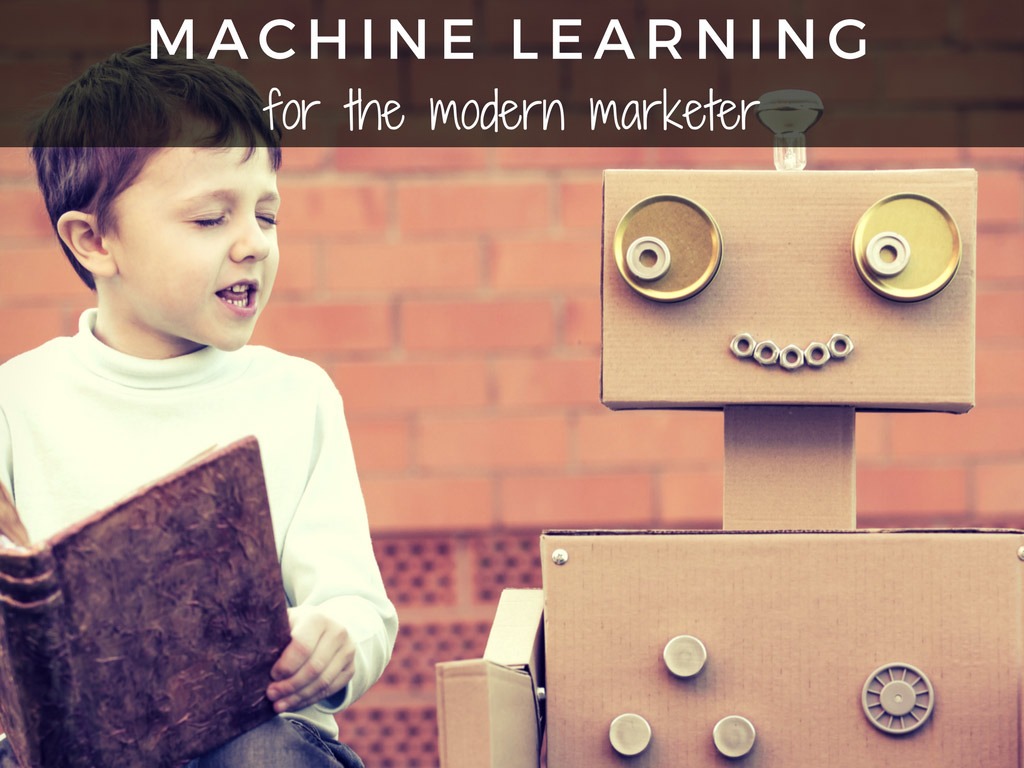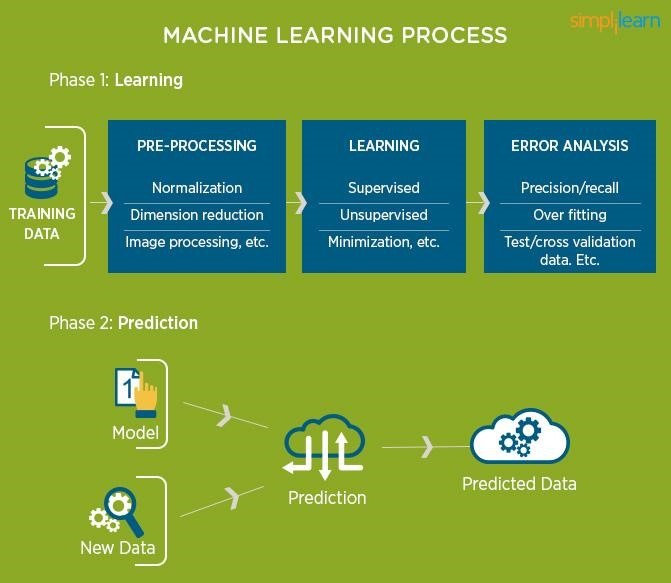Machine Learning for the Modern Marketer
Unless you have been living under a rock, you’ve probably heard the term “Machine Learning” in the past year or two. In fact, machine learning is such an important development, that companies like Google and Amazon are betting the future of their companies on this technology and its eventual successor, Artificial Intelligence (AI). Many marketing systems are beginning to use Machine Learning in their products and processes. We expect this will inevitably change the world of marketing as well. But what is machine learning?

What is Machine Learning?
Early computer programming pioneer, Arthur Samuel, coined the phrase “Machine Learning” in 1959, defining it as, “Giving computers the ability to learn without being explicitly programmed”. Years later SAS, one of the world’s leading analytics software developers, defined machine learning as “A method of data analysis that automates analytical model building.”
In other words, machine learning allows a computer or a network of computers to find and analyze data and provide insightful information without needing to be told (programmed) as to what the outcome should be. It does this by using algorithms that iteratively learn from data, which presents huge opportunities for many industries.
How Does Machine Learning Work?
At a high level, the process of machine learning can be broken into two main phases: learning and predicting. We will use the process of identifying a specific breed of dog in images as an example of machine learning workflow.
Phase 1 – Learning
- Pre-processing – Raw data is collected and stored for use. The data is normalized and in some case sorted into like types. For example, in the case of images, pictures are collected and then sorted. Poor-quality images are excluded from being used and the good images are organized into similar sizes and aspect ratios to make comparing them more efficient later. In this step the images are also sorted into different types, such as pictures of Black Labrador Retrievers.
- Supervised Learning – Next, in a step known as ‘Supervised Learning’, the algorithms are programmed to understand specific patterns and attributes to look for and consider as part of the workflow process. Programmers “teach” the algorithm how to tell the difference between different dog breeds by feeding large amounts of the sorted data with the desired outcome into the process. In our example, valid images of a Black Labrador Retriever.
- Unsupervised Learning – After the algorithm is trained to understand and classify data, the next step called ‘Unsupervised Learning’ begins. In Unsupervised Learning, a programmer does not label any data and instead the machine must analyze the provided data, and pick the best option. In our example thousands of images of dogs are scanned and suspected images of Black Labrador Retrievers are identified.
- Error Analysis – The last step of the learning phase is to identify and analyze errors, and improve the precision through subsequent changes and tests. Incorrectly identified images are flagged and programmers make corrections to the algorithm to identify why the image was misidentified.
Phase 2 – Predicting
Once the reliability of the algorithm is at a sufficient level, it is ready to be rolled out and tested in a real-world setting, typically on a small sample group known as beta testers. In this phase, the work model is tested against user inputted data and is left on its own to filter, sort and make predictions or determinations from that data. In our example, a user has a photo app on their mobile device and the algorithm is asked to look at the images and to pick out the pictures of Fido the Black Labrador Retriever.
This is based off the user identifying an image of Fido on their phone by which the algorithm can run against. The program outputs images that it thinks are Fido, while the user can let it know which ones it got right and which ones it got wrong. This info is saved for future use and thus the machine learns and is better able to identify Fido in future images. Eventually after scanning enough photos, the program can self-identify pictures of Fido as they are saved to the phone and can tag them immediately.

What is Machine Learning used for?
The short answer to this question is just about everything! While our example showed how machine learning can be used to scan and identify different images, it is used in many industries in many different ways. Here are just a few examples of machine learning in use today:
- Digital Marketing – Machine learning is a valuable tool used by agencies like Vovia to help us better serve ads to users that are likely to convert on a specific product/service, at the time and place when they are most likely to convert. We use tools that help us to automate relatively simple, but labour intensive tasks, freeing our time to work on the more complex tasks associated with campaign management. This includes activities such as adjusting the hours and days a campaign will run to avoid wasted spend, adjusting bid rates to make sure ads will show to users that are likely to convert and adjusting bids for different device types to name just a few. We see huge opportunity for digital marketing as machine learning continues to improve.
- Heathcare – Machine learning algorithms can process information and recognize patterns and trends much more effectively than a human or even a large group of humans can. One study used machine learning to analyze the early mammography results of women who were later diagnosed with breast cancer. The algorithm was able to spot patterns that allowed it to predict up to 52% of the confirmed cancer cases up to a year before the women were diagnosed via traditional methods.
- Digital/Home Assistants – In recent years, mobile phones have morphed from being simple telephones, to being high-powered internet connected mobile computers. Advances in technology have allowed mobile devices to act as collection points for massive amounts of data about the users of these devices. Machine learning is used by various apps and operating systems to act as a digital assistant for users of the device. For example, it can look at the locations and times of meetings in your calendar and can proactively notify you of the best route to take or notify you of traffic conditions that may cause a delay and reroute you a different way. The same is true for internet connected home devices like Amazon’s Echo and Google’s Google Home line of products. These devices use machine learning to assist in the automation of things like home heating, security, entertainment, and online shopping.
What’s the End Game?
Machine learning is at the core of our inevitable journey towards AI, where we allow computers to learn and make decisions without any user intervention along the way. Some people are frightened by this, some are excited, but at the end of the day machine learning acts as a core processing piece of an AI brain and frees up humans to take on more complex or involved tasks and projects. For better or worse, machine learning will change every industry and will have a massive impact on our day-to-day lives, even if we don’t know it is there.
Are you using any apps or systems that leverage machine learning? We’d love to hear your thoughts, do you feel Machine Learning will make your industry better or worse?
